This is an entry to the Insects of the World contest.
The Dark Paper Wasp (Polistes fuscatus) is a social wasp found in eastern North America, from Canada to Florida and west to Texas.
Taxonomy of Polistes fuscatus
- Kingdom: Animalia
- Phylum: Arthropoda
- Class: Insecta
- Order: Hymenoptera
- Family: Vespidae
- Genus: Polistes
- Species: Polistes fuscatus
Appearance and Identification
This wasp is fairly large, about 15-21mm and is commonly seen making its social nests near dwellings. Like other Polistes wasps of their genus, they create the familiar 'paper' nests with many cavities or cells. Here you can see a typical example of one I pulled from BugGuide.net:
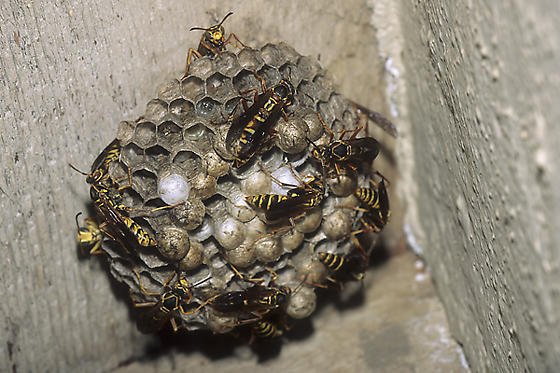
The nest is constructed using masticated wood pulp. Colonies can number up to 200+ individuals.
This wasp can easily be confused with other members of the genus. Indeed, this quote sums it up:
A hypervariable paper wasp in color and pattern; the separation of P. fuscatus from related species remains the greatest taxonomic problem of the northeastern Vespidae fauna.
In the New England area, it is the most frequently encountered native Polistes. It is much darker in this region and contrasts easily with the more rufous southern members of the genus. The introduced European Paper Wasp has bold yellow and black markings, with much more pronounced yellow on the abdomen.
See this comparison image I pulled from [iNaturalist.org] and note the relative magnitude of observations of these 3 Polistes wasps. (https://www.inaturalist.org/observations?place_id=2&taxon_id=52756&view=species)
Adult wasps feed on nectar at flowers.
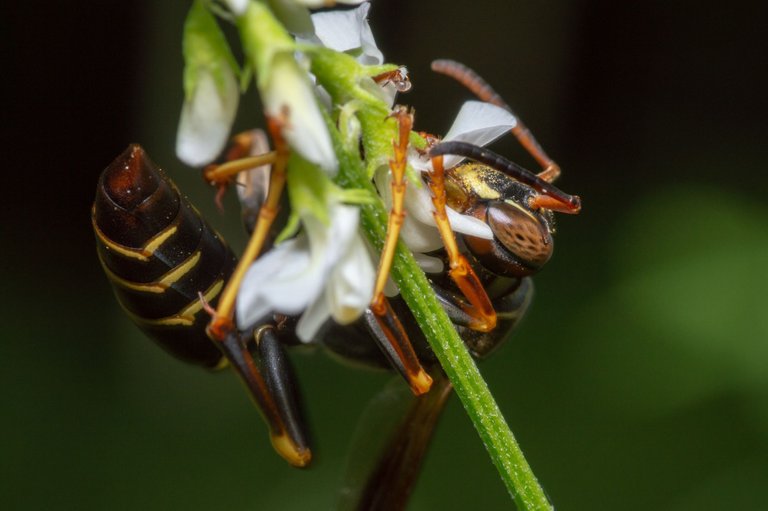
This individual I found in Vermont and has the typical very dark coloration of the species in its northern range. (By the way, as for stings, these wasps in my opinion have never bothered me even when shoving a camera right in their face. If you leave them alone, they'll leave you alone. Their sting is equivalent to a needle poke, a venomous needle I imagine.)
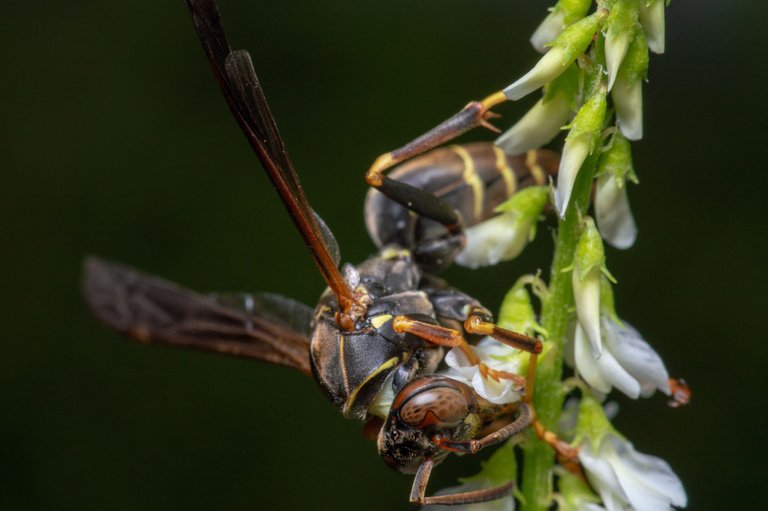
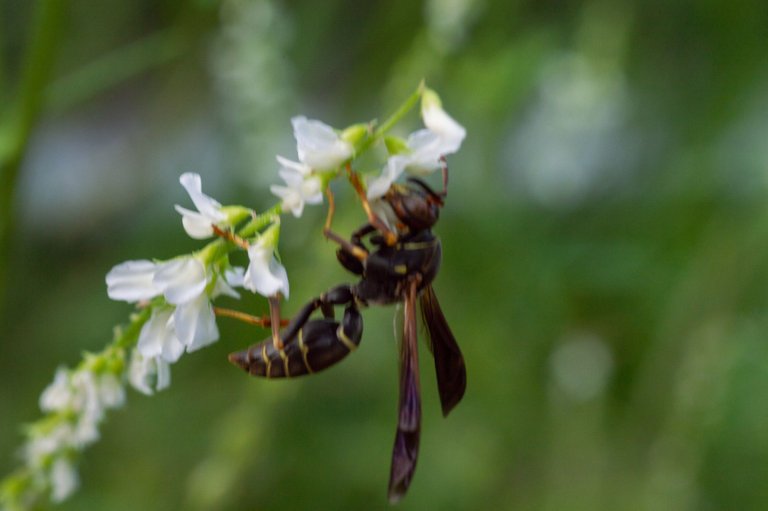
Here is another specimen which was exceptionally dark, with dark dominating even more and very little yellow showing anywhere minus the ends of the legs. You can see also typical rufous/red 'spots' on the second terga of the abdomen.
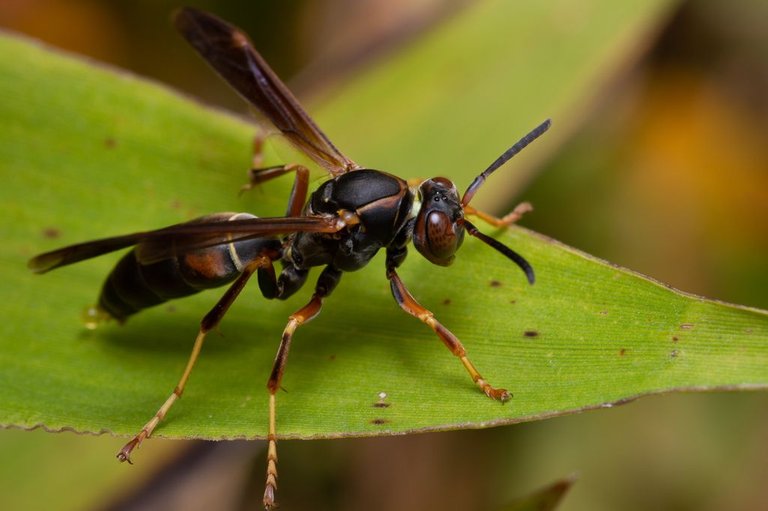
The facial and abdominal markings and coloration are variable with certain color morphs being more predominant in certain regions. The lighter coloration as seen below is more commonly seen in the southern United States. You can see more yellow in the face of the individual in the photo below. It's abdomen is also marked with more yellow along the edges of the tergae. Rufous morphs also appear more frequently as you move into the southern United States.
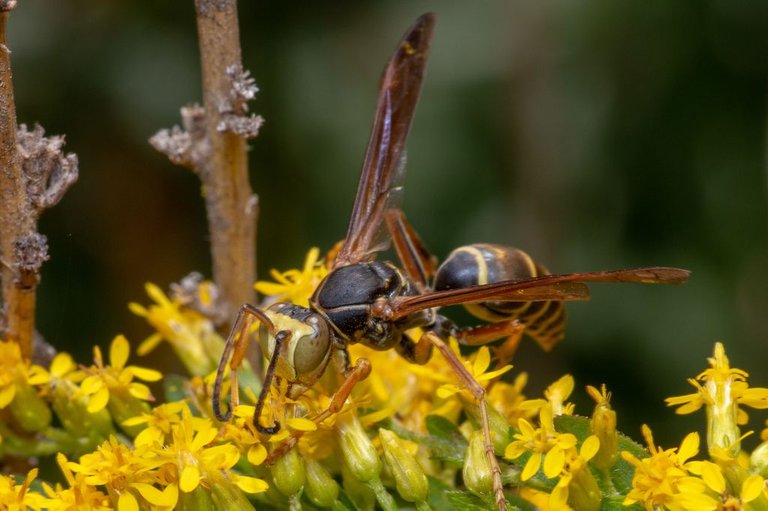
Ecology and Lifecycle
These wasps live for 1 year. The queen or 'foundress' will have typically overwintered and emerges to start a colony after having been fertilized the previous fall. She starts a colony and the resulting workers are sterile females (typical of many social wasps and ants). The brood grows and the nest is increased in size until sometime in late summer and fall when the queen produces sexually viable males and females. The females mate and will become the new queens for the next spring after hibernating through the winter. The males and workers die as winter sets in.
Research has found that P. fuscatus is actually under pressure from the introduced European Paper Wasp (P. dominula) in that the European wasp outcompetes its native cousin, either directly or indirectly. P. dominula appears to be more productive and is a threat to P. fuscatus in areas where it is introduced.
Their habitat is wooded forests and as mentioned above, near human habitation oftentimes. Like many eusocial insects, they have interesting hierarchies and complex behavior to communicate threats and resources to each other. It is well worth researching any of these insects in my opinion because they are just so fascinating.

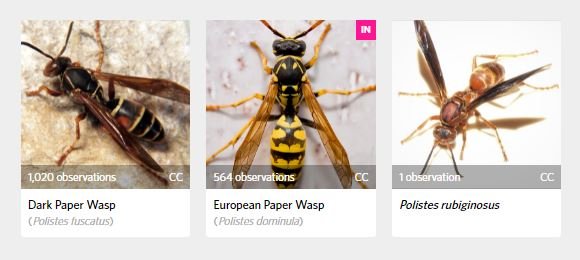
Interesting and informative post along with excellent visuals about the Dark Paper Wasp!
Since the wasps are efficient pollinators I will respect their work and let them go about their business @funferall
Upvoted and curated
@tipu curate 2
Upvoted 👌 (Mana: 20/100) Liquid rewards.
Your content has been voted as a part of Encouragement program. Keep up the good work!
Use Ecency daily to boost your growth on platform!
Support Ecency
Vote for Proposal
Delegate HP and earn more
Hi, I have manually curated your content as you have posted a photo that I found interesting. Your post will be included in my Photophile series of posts and let me share you some !PIZZA and !BEER for the curation!
$PIZZA@funferall! I sent you a slice of on behalf of @photophile.
Learn more about $PIZZA Token at hive.pizza (2/10)